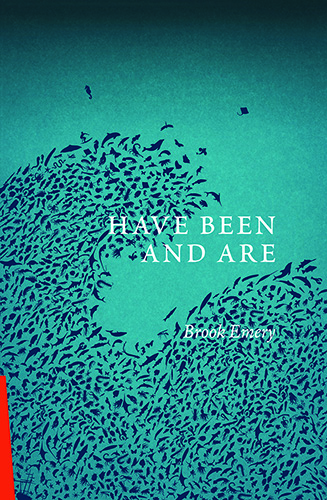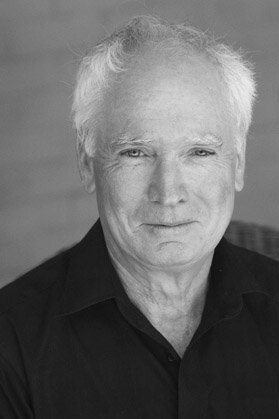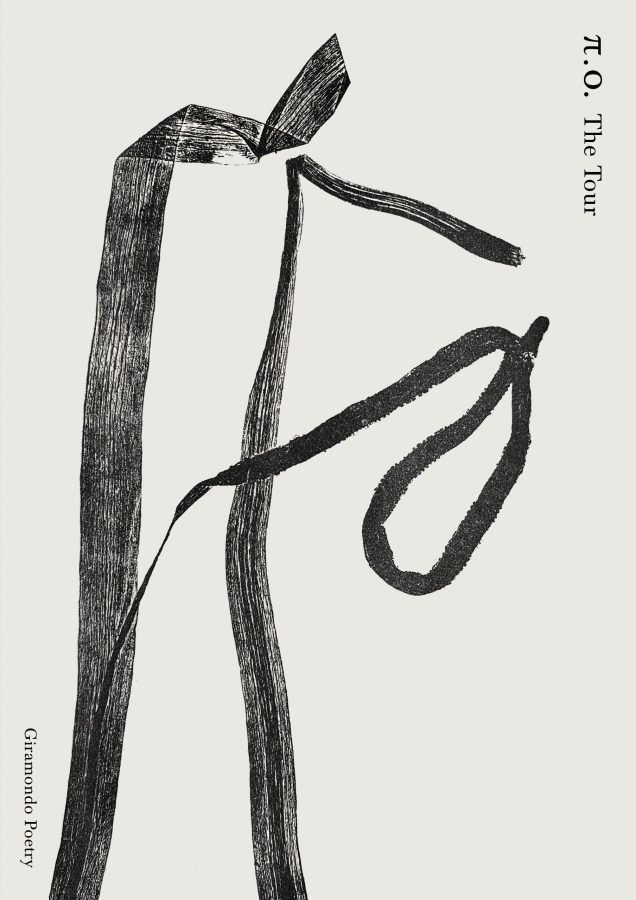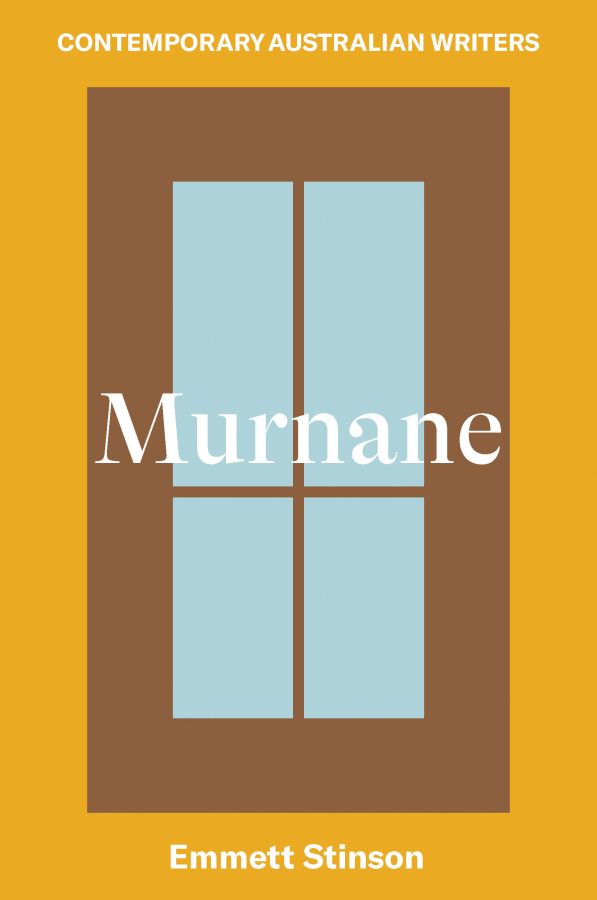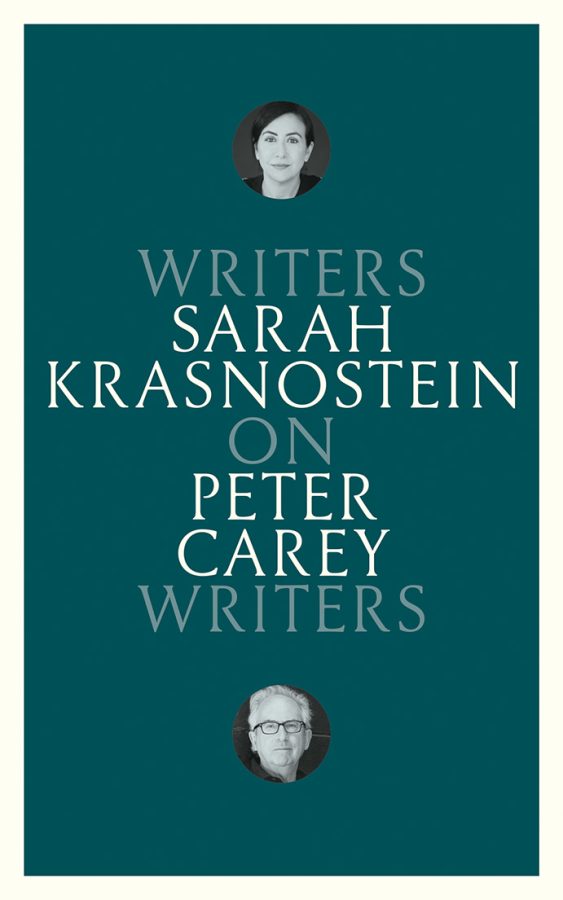Like some austere ancestor, venerated, often denigrated, notoriously difficult and spiky, philosophy has the reputation for being rational and analytic, seeking an entirely objective account of things as they are. Poetry is, for many, the most subjective form of writing, heavily reliant on emotion rather than cool reasoning. Like other academic disciplines, philosophy would seem of necessity to be paraphrasable, while poetry is radically resistant to paraphrase. The poem is the words of the poem exactly as they are, not something roughly similar. Whilst later I will query the extent to which these images hold good, the philosopher’s and the poet’s procedures on the surface seem quite different.
Four recent books by three Australian poets share a close engagement with philosophy. The presence of philosophy in these books goes beyond the brief appearance here and there of a few ideas or maxims gleaned from a handful of philosophers. In the poetry of Brook Emery, Jakob Ziguras and Luke Fischer philosophic reflection and the work of various prominent philosophers occupy centre stage in a way that is rare in Australian poetry.
Fischer and Ziguras are themselves professional philosophers. Jakob Ziguras has taught philosophy at Notre Dame University in Sydney and written extensively on the epistemological theories of Aristotle and Goethe. Associated with the Philosophy Department at Sydney University, Luke Fischer has written a book on the relationship between phenomenology and Rilke’s poetry and has an ongoing interest in contemporary Continental philosophy. Darwin and Heidegger figure prominently in Brook Emery’s book alongside the historian and thinker about the nature and practice of history, Inga Clendinnen. Philosophy is a binding thread in the work of all three poets, yet they approach the task of bringing philosophy into poetry in very different ways.
Brook Emery’s Have Been And Are takes its title from the last sentence of Darwin’s Origins of Species, ‘Endless forms most beautiful and wonderful have been and are being evolved.’ Each of the 39 poems in Have Been And Are starts with a quotation from a poet, philosopher, novelist, musician or historian, and the collection is imbued with a sense of a continuous engagement with a wealth of ideas. These ideas, often philosophical in their reach, occupy one dimension of the poem and, on the other dimension, the poet paces the beach, swims out into the surf or recollects for us details from his earlier life, particularly childhood and adolescence. There is a profoundly Australian feel to these poems, the old seaside Australia of the fifties and sixties, and reaching back even further. Trees, bushes, flowers, birds are vividly evoked. The sea and the sun seem omnipresent. Emery creates this world with great elegance and surety. In places I am reminded of Stephen Dedalus on the beach in Ulysses, observing ‘seaspawn and seawrack’, impermanence, imprecision, but Emery wears his philosophy much more lightly and it is Heraclitean or phenomenological rather than Aristotelian or scholastic.
As the first poem, ‘As the word environment’, makes clear, there is a strong tradition of North American nature writing embodied in Emery’s work. The poem makes reference to to John Muir, Ted Kooser, novelist Jim Harrison, singer-songwriter Joy Williams, as well as, important philosophically as much as poetically, Gerard Manley Hopkins with his theory of inscape. Overall, Emery’s poems in this collection remind me of Charles Wright’s, with their combination of the poet’s recorded presence in a landscape along with meditation on a range of writers, thinkers and poets. Like Wright, Emery often establishes a dialogue between sensual immediacy, being here in the moment, and an array of pre-existing philosophical, intellectual insights. At times the names of philosophers and poets drop away to leave us simply with the confrontation between sensual immediacy and the ancient wisdom of panta rhei, made even more vivid as science reveals the dimensions of our cosmos. In ‘Everything waste’, unlike many philosophic meditations (think Kant, think Descartes), reality is experienced not by the lone male thinker but by a couple, a kind of Philemon and Baucis pair of long-devoted lovers holding hands, wise in their togetherness, walking the beach, observing, opening out to the cosmos and to the presence of where they are:
What if we could hold all this like the sail almost holds the
breeze,
hold the instant even for an instant before it lifts and wavers,
lifts and falls,
shuddering here
before drawing back and up again, the cell dividing, the weed
decaying,
the plover
in his elegant gavotte, the fish and birds even now gliding from our sight,
stop it all from passing into memory, into yearning,
forgetfulness,
slipping beyond the boundaries of the self?
Emery’s poems are deeply Australian not only in their landscapes and sense of place, but in their projection of a shared commonality, their delight in the instinctual life, childhood memories, being in nature. Emery often uses ‘we’ in the poems to include other Australians of that time and background, as if the poet is speaking for a given group and articulating something already established, familiar to his readers. It is, for the most part, this very Australian, hedonistic Sydney beach culture that is brought into contact with the wider world of philosophic ideas, providing a ground from which to look at them.
Emery’s is a voice that wants to assert its participation in shared experiences. There is often a sense of being average, not given to miracles, so that the aspiration in Emery’s poetry is, in large measure, to articulate his commonality with the greatest possible eloquence. In ‘What were they then’, Emery recalls his life as ‘A baby-boomer who dodged the war in Vietnam’, who worked as a high-school history teacher ‘for twenty years and could argue the distinctions to be drawn between Vladimir Ilyich Ulyanov and Joseph Stalin’ and who reflects now on fathers and grandfathers ‘who have settled into wrinkles, canes, dementia and who/ we can’t believe we will ever be or ever could become. . .’ More often it is Emery’s seaside adolescence that is recalled, as in the ending of ‘The most important experience of being’ where, observing a teenage boy stripping off to dash through sprinklers leaving his clothes behind but holding onto his shorts, Emery reflects ‘Had he trusted his shorts to his friends/ they would have dashed away. We would have,/ when we were fifteen. . .’ Being part of a group, of a given historic and social moment, is a strong theme in Emery’s poetry. It can also deliver very moving jolts of recognition, as at the end of ‘A spring day like this’ where Emery recalls
Long after my father-in-law lost his speech to Alzheimer's, when we were crossing Sydney Harbour in early evening light, out of the blue he spoke one word; 'beautiful'. . .
Perhaps rather than seeing Have Been And Are as a dialogue it is more accurate to see it as a three-way conversation between the given Australian city-boy of the fifties and sixties, with his outdoor seaside life, the traditions encountered through a lifetime’s reading of philosophers, scientists, poets and thinkers, and nature itself, the surrounding, immediate, visual, tactile world that Emery’s poetry has such a gift for summoning. Philosophy in Have Been And Are is, in large measure, a range of theoretical insights and facts to be engaged with or tested by placing them against the full direct sensual being in the world that poetry (on this model) is, a kind of instinctive, physical touchstone that alternately probes philosophy and is enriched by it.
If Emery’s Have Been And Are recalls North American poets and involves the frequent juxtaposition of iconic Australian material with the philosophic, Jakob Ziguras’ two books take us more directly within philosophy itself and have a more European feel. Chains of Snow includes poems addressed to, celebrating or critiquing Thales, Zeno, Socrates, Plato, Aristotle, Abelard, Aquinas, Descartes and Willard Van Orman Quine. While tilted towards Greek and medieval philosophy it is an eclectic mix. Rather than set the ideas of these philosophers off against an ‘I’ grounded in a present reality (as Emery does) Ziguras explores the ideas and worlds of each philosopher in their own right. In ‘Plato at Piraeus’ Plato walks beside the dawn sea where the fishermen haul in their night’s catch, then scale and gut the fish. The supposed precision and elegance of Plato’s theory of forms, its attempt to separate an ideal unchanging realm of truths from the diverse, imprecise, shifting world of the senses, stands refuted by the teeming diversity of the catch:
So ebbs the sea's ungovernable song That murmurs in the sailor's murky blood. And yet the morning light describes these scales As fondly as the clustered hoplite shields Of Salamis, articulates the tails. This pungent wealth the formless darkness yields To Helios' shining net—all this he lifts Daily from deep oblivion, this lie Laden with gasping forms, with beauty's gifts— Knotted too tight for fingers to untie.
I wondered whether the choice of image here, the teeming catch brought up in nets, has a trace of Kant’s image of human consciousness as the net that tells us as much about its own structure as about what is truly in the ocean. In ‘Pigeons’, critiquing Descartes’ view that ‘no soul instils/ life into the body of a beast’, Ziguras comments ‘Philosophers have often lived/ in solipsistic certainties,/ safe from the world.’ Rather than settling on the obvious counter-examples to Descartes’ mechanistic view of animals – cats, dogs, elephants, whales or other mammals – Ziguras observes feeding pigeons ‘their shoulders hunched,/ their heads like metronomes’, but perhaps no more mechanical than anyone else engrossed in performing a single action. The originality of Ziguras’ perceptions, the unexpected surprise to be found so often in his poems, comes out in the closing lines where the pigeons escape all attempts to control them physically or to fix them within our mental schemas:
They peck as if attempting to collect small pieces of themselves; then, when I stand, together lift in fright, like many mousetraps snapping all at once. As they fly off, briefly, in the struggle of the wings, a rainbow sheen plays on their ruffled grey, like petrol on a stormy ocean; and from my fingers hang the broken strings.
It is impossible to write of Chains of Snow without discussing the poem ‘Yiddish Songs’ from which the title of the book comes. It is a deep probing of the edifice of European culture in which western philosophy stands embedded and indicted. In a book where the dominant tone is impersonal, classical, it is also a markedly personal poem, laying bare the author, his ambitions and hesitations. Here, a world away from Emery’s Australian sunshine, we enter the dark icy winter of a Polish New Year. Near the opening of the poem the speaker contrasts himself ‘standing on a balcony, drunk’ with Rilke who ‘stood on a balcony, was called;/ Although it took him ten years to submit/ To the dark thorn that blossomed in his blood.’ If Ziguras states he is not Rilke, he seems equally, through the honesty and tough striving towards poetic perfection embodied in the crafting of the poem, in the originality and precision of its images, not to be one of those ‘lesser men’ who ‘commit/ Theft on rich echoes, pick the pockets of/ The drunken stairwells on Józefa street.’ Looking beyond the wintry evening of drinking and the dark thoughts of the past that lies all around him where ‘Death deals the cards [. . .] Arranging fates in hierarchies of race’, the speaker plans the next morning to join those visiting the Jewish cemetery:
And I will look intently, with the soft Sincerity of an unfocused lens, At the broken tablets. Then having doffed The clip-on yarmulke, I'll meet with friends At the Galicia Museum hall To see a beautiful young woman, who bends Briefly beneath the shadow of a shawl— Black as the wind that blows all-widowing: Breath of an angel ashen, terrible— To hear her clear voice sing in Yiddish; sing Bolt upright as a flamenco dancer— That matador of grief—the lonely ring Of light, and darkness of applause around her.
The complexity of this poem is that it is as much a celebration of what continues as a lament for what has been destroyed. The paradoxical final image – ‘darkness of applause’ – registers the ambiguity of continuing along with its necessity. In the poem’s opening the speaker is filled with self-doubt and an almost ‘maudlin’ rejection of the culture around him, including the culture embedded in his very making of poetry. By the poem’s close, at the point where it shifts into the future tense, he is able to project himself into a meaningful future, into a self committed to continuing and celebrating what is of value in that culture. The poem itself, dignified, formal, subtly nuanced, bears witness to the values it celebrates.
Philosophy as the flawed cornerstone of an even more flawed culture lies at the heart of Ziguras’ second collection The Sepia Carousel. A prominent figure in this book is Goethe, the archetypal Enlightenment poet writing at a moment when the ideals of the French Revolution and the promises of science seemed to guarantee limitless progress. In Ziguras’ sequence of poems ‘Roman Sonnets’, ‘Roman Elegy’ (an adaptation of Goethe’s own ‘Römische Elegie V’) and ‘The Appian Way’, Goethe seems an anachronism to himself, caught up in a past that has already lost its vibrancy, a jaded tourist trying to cram it all in. Stylistically, with their classicism, their elegant rhymes and accumulation of cultural references, Ziguras’ poems suggest a consciousness despairing at humanity’s illusions. The image of Europe’s culture – its philosophy, poetry, music, art – lingering on as so many artefacts in a damaged and dislocated world is developed in the poem that gives the book its title:
The horses on the sepia carousel pursue horizons in the tepid rain. I wonder if the souvenir-stalls sell a tiny replica in porcelain, or else a music box to perfect scale that endlessly repeats the same refrain. A single wooden horse that bites it tail, revolving reproductions of a stock, a turning compass that is bound to fail inscribing its ideal against the clock [. . .]
The bleakness of Ziguras’ vision of Western culture dominates this book far more than it does Chains of Snow. Whether it is St Jerome feeling the skull on his desk growing larger than the Bible facing it in ‘St Jerome Writing by Caravaggio’, or the closing lines of poem VI of ‘Jet Lag Song Nets’ (‘So many crates of disconnected wood/ And no instructions how to build the Good’), whether ‘The Death of Rimbaud’ with ‘his body empty as a battered shoe’, or ‘Colours’ with its images of violence and rape, in these poems civilization is no more than a flimsy veneer to cover human monstrosity.
If Emery approaches philosophy as one dimension of experience to be held in balance against our physically being here with the sea and the light, and Ziguras in his second book largely assimilates it to a culture that failed, Luke Fischer in A Personal History of Vision adopts quite a different approach, removing the barrier between philosophy and poetry. Often in these poems he can be seen as doing philosophy by means of poetry. (Something very similar could be said of several of Ziguras’ poems from Chains of Snow.)
Although philosophy and poetry have traditionally been regarded as in opposition, the lines between them are not really so clear. It is worth recalling that for most of its long history philosophy was not confined to university departments but offered itself to the general reader. Plato’s Dialogues and The Republic belong as much to literature as to philosophy, and Wittgenstein’s Philosophical Investigations is, in places, not so far from discrete prose poems, provocations for thought, while his Tractatus could be read as a sequence of aphorisms, rather like the work of René Char. Whether it’s Spinoza or Aristotle, Merleau-Ponty or Levinas, we return to reading the major philosophers word by word, closely, in the original, beyond paraphrase, knowing that our rewordings are only approximations. Many of philosophy’s most illuminating ideas come in the form of images, complex richly poetic metaphors – Plato’s cave, Descartes’ demon of doubt, Leibnitz’s monads, in Kant’s Prolegomena, the image of the net cast into the sea, or Deleuze and Guattari’s rhizomes. Also, if we consider precision of writing, attention to an image seen from many angles or the quest for the most revealing paradox, many philosophers from the Pre-Socratics and Lucretius to Wittgenstein and Merleau-Ponty are as much poets as philosophers.
Likewise poetry at its strongest goes beyond the subjective and emotional, taking us deep into the reality of things. (I’m implicitly relying here on the sense of poetry as an ideal, as the most intense shaping of words, a verbal artform marked by its rigour, its instinct for beauty and for a fully-charged use of language, differentiated from simply verse per se and especially from doggerel as much as from purely informative, descriptive or functional prose.) Poetry typically does much more than simply chronicle our individual lives, or even the typical lives of a given society at a given time. Where it most endures and most reaches us, poetry addresses deeply philosophical questions: ‘What is the nature of reality?’; ‘What is the good life?’ Like philosophy, poetry seeks to get beyond banal ready-made phrases and answers, providing us with a new precision, something that cleaves far more closely to the heart of things. If philosophy has no resonance, is it great philosophy? If poetry has no truth in it, is it great poetry? Both poetry and philosophy want us to look more deeply into what we feel, who we are and what the world around us is like by paying the greatest attention to precision in language.
The title of Luke Fischer’s book, A Personal History of Vision, points in several directions. ‘Vision’, as the act of seeing or the faculty that makes seeing possible, is objective – as true for me as it would be for you. ‘A personal history’ implies the individual, the subjective. The title suggests the duality in Fischer’s position as both poet and philosopher. The act of seeing, a major concern of philosophers like Husserl and Merleau-Ponty, provides a unifying focus for the book.
Many poems in this collection deal with painting and the visual arts. Rather than being mere description – one of the potential dangers of ekphrasis – or an indulgence in cultural tourism, Fischer’s poems about art are drawn to the connections between the act of seeing and inward illumination. Describing the figure of the virgin in Fra Angelico’s painting when the angel Gabriel appears to her, ‘Annunciation’ opens out into a reflection on what being fully attentive in the present may be:
Her eyes listen to the other side of space for a rustle a call a voice And from the garden in a rose dress and parrot-feathered wings the archangel has just flown in He (or is it she?) bends and with a slight smile looks directly at her confirms through his presence Yes here I am
It strikes me that the poem isn’t so much retelling a Bible episode as revealing the deep intuition that there is ‘the other side of space’ and that its messengers may well come as the fragrance and beauty of plants and trees or the inquisitive colourful interruption of birds. This intense seeing that art prompts acts as the trigger for a philosophic poem. As Merleau-Ponty was well aware, the contemplation of art, like the meditative state close attention to nature brings, offers a powerful way into philosophical reflections on the nature of reality and humanity’s efforts to make meaning in the face of death.
Many of these poems speak of the tension between the solidity that aspects of nature seem to offer and our own experience of transience. In ‘Horizon of Alps (K)’ we read:
Always at the boundary of vision, of thought even when we look the other way. Though often concealed in cloud and mist veiled in haze, we know they endure. Seemingly impenetrable matter we sense a hidden truth, that they are minds absorbed in contemplation. On halcyon mornings Lac Léman almost renders them as they are in an image on diaphanous depth. Their peaks shorn of vegetation, sheer faces of stone, absolute architecture, prefigurations of the crystals they hold. Frozen tsunamis, primeval modernists their abstraction rises above the lake and its scattered sails – white chips in blue paint – above the foothills’ sprawl of villages, the tangle of forests and human lives, above emotion. [. . .]
These mist-shrouded mountains, only partly visible, the other side of the lake, evoke the quest for ‘a feeling of permanence’, something deeply embedded in religion and in all art. This poem makes me think of Merleau-Ponty’s essay on Cézanne’s doubt, on what it might mean to paint the same landscape over and over, as Cézanne did with Mont Sainte-Victoire, on what this shows us about art and seeing.
Besides the many poems about seeing where the poet looks closely at the natural world and at various paintings and sculptures, there are also more personal poems focused on people and relationships. ‘Death’, ‘Grief’, ‘In the mouth of a shark’, ‘Dawn’ and ‘Banksia Spikes’ particularly moved me with their evocation of life’s frailty. None of these poems is simply an account of an event or a random anecdote. In different ways they address the philosophic question ‘What is the good life?’ or, perhaps the equally valid question ‘What is a good person?’ In ‘Grief’ the speaker registers suffering and loss as in the end simply one’s own, what is there beyond platitude or naming: ‘After thirty-six years/ I’ve learned to accept/ the gift of grief// The heart’s fall/ like a coconut/ breaking/ the ground//The dark pool/ one finds/ on a late summer night/ and swims’. The simplicity here bears the mark of things seen clearly, seen in their essence, as we would ask of philosophy.
If we wanted to argue that poetry can function as an amazing shorthand, enabling us to do complex philosophy in the briefest space, then A Personal History of Vision offers some perfect examples. The poem ‘Stones’, a meditation that encompasses Heidegger, takes us very deeply into life.
We generally assume they've no interior or soul. When we break them open they present a new exterior. They're a fraction more than nothing: a quality of hardness, a resistance to our touch. To our sight bounded shapes; unmoving inanimate. We speak of their faces only metaphorically: lacking eyes and mouth, at most they're blank. But sitting by this stream I'm struck by your simple presence. Meeting you the water slows and wrinkles [. . .}
I am struck by the precision, the groundedness with which the poem starts, and then, in the fifth stanza, the sudden transition from ‘they’ to ‘you’, and the way the stones slip under the skin of being or perhaps the way the poet slips under the skin of the world. Part of the greatness of this poem is the way it comes close, steps back, comes close again – the way it leaps once from ‘they’ to ‘you’, then guardedly in stanzas six and seven comes back to Heidegger’s perspective, with his dismissive assertion that ‘the stone is worldless’, a claim Fischer queries though admitting ‘their detachment’s perfect; they seem outside relation’. The scepticism in that ‘seem’ is perfect: what can we possibly know of the inwardness of the world? And what death-dealing negativity is Heidegger trying to install by denying the stone any inwardness or by placing beyond all communication whatever doesn’t speak in human words? In the last few stanzas the poem shifts to a new level, and then in the final line to somewhere else again. Rapid transitions constantly expand the poem so that it includes inner and outer, the personal alongside earth at its most resistant to us. The stones in the stream are ‘indifferent to our distinctions’, not only the categories we give them – ‘metamorphic, igneous/ sandstone’ but equally the binary ‘true or false’. At this point the poet’s presence, sitting beside the stream where the stones lie, is introduced again as the poem moves to its close:
But this afternoon as I worried about what to write and do, they and not the versatile stream appeared as sage — in the world beyond the world, as though they were primeval Buddhas who attained complete humility and sunken in meditation hardly noticed death – only an increase in light.
In the poem ‘Why I write’, Fischer suggests that as source of revelation, as opener of ‘rooms/ in the mansion of world-mind’, poetry brings us closer to truth than philosophy. Why would a professional philosopher think this? What advantages might poetry have? One advantage — and you can see this in ‘Stones’ — is the way poetry pushes the thinker in us to keep going one step further, to remain dissatisfied not only with commonly accepted wisdom but with whatever conclusion we have just reached, moving to alternatives, to deeper refinements. Aesthetically poetry abhors mere repetition of ideas but wants us to go elsewhere, to go deeper. In this sense the aesthetic rigour of poetry prompts a closer cleaving to reality. Poetry and philosophy both seek insight. What distinguishes the insights of poetry is that it uses a wider range of mental and emotional capacities to achieve insights and then to extend or supplement them. Our deep thinking about life and meaning works best when we have more than the processes of logic to guide us, but rather engage our whole being, including our capacity for creating webs of images and metaphors. A poem like Fischer’s ‘Stones’ illustrates this, as it gains so much from its images. The stones are faces ‘lacking eyes and mouth’, but in an implicit reference to Heraclitus they and not the stream at a given moment are ‘sage’ to us. The meditative thinking of ‘Stones’ reaches so far in part because the poet takes the risk of bringing the self into the poem. It is only when the self is tapped into a second time that the transitions of the last ten lines are possible. Likewise the power of concrete things may come alive for us through our feel for the textures, cadences and rhythms of words, and for the tones or (more often) balance of tones that poetry requires. In ‘Stones’ there is an instinctive balance between crisp hard words like ‘break them open’, ‘blank’, ‘bare’, softer but still very physical words like the phrase ‘the water slows and wrinkles’ and more abstract words like ‘quality’, ‘versatile’ or ‘humility’, as the poem negotiates its way between physical immediacy and generality.
Stepping back for the moment from the four books under discussion, I wonder whether a certain affinity with philosophy, a desire to enter that space of contemplating large questions, has not always been a major strength of Australian poetry. It can be seen in Slessor’s ‘Five Bells’, in the long meditative poems of Christopher Brennan, particularly ‘The Wanderer’, as in many of the Buddhist-inspired poems of Robert Gray or Judith Beveridge. It can be found in poets as diverse as J.S. Harry, Kevin Hart, Jennifer Maiden, Robert Adamson and Stuart Cooke. Tempering or outright resisting the larrikin streak or the desire to dwell only in the description of very specific places, this willingness to locate oneself at the centre of the most difficult questions of meaning may help explain some of the enduring qualities in Australian poetry. In particular, the commitment to a slow view of poetry, the persistent reaching for a deeper level within the poem, probably foster a certain freedom from the latest trends. In their openness to what is spiky and difficult, in their engagement with philosophic thought, these four books by Brook Emery, Jakob Ziguras and Luke Fischer are important contributions to Australian poetry.
